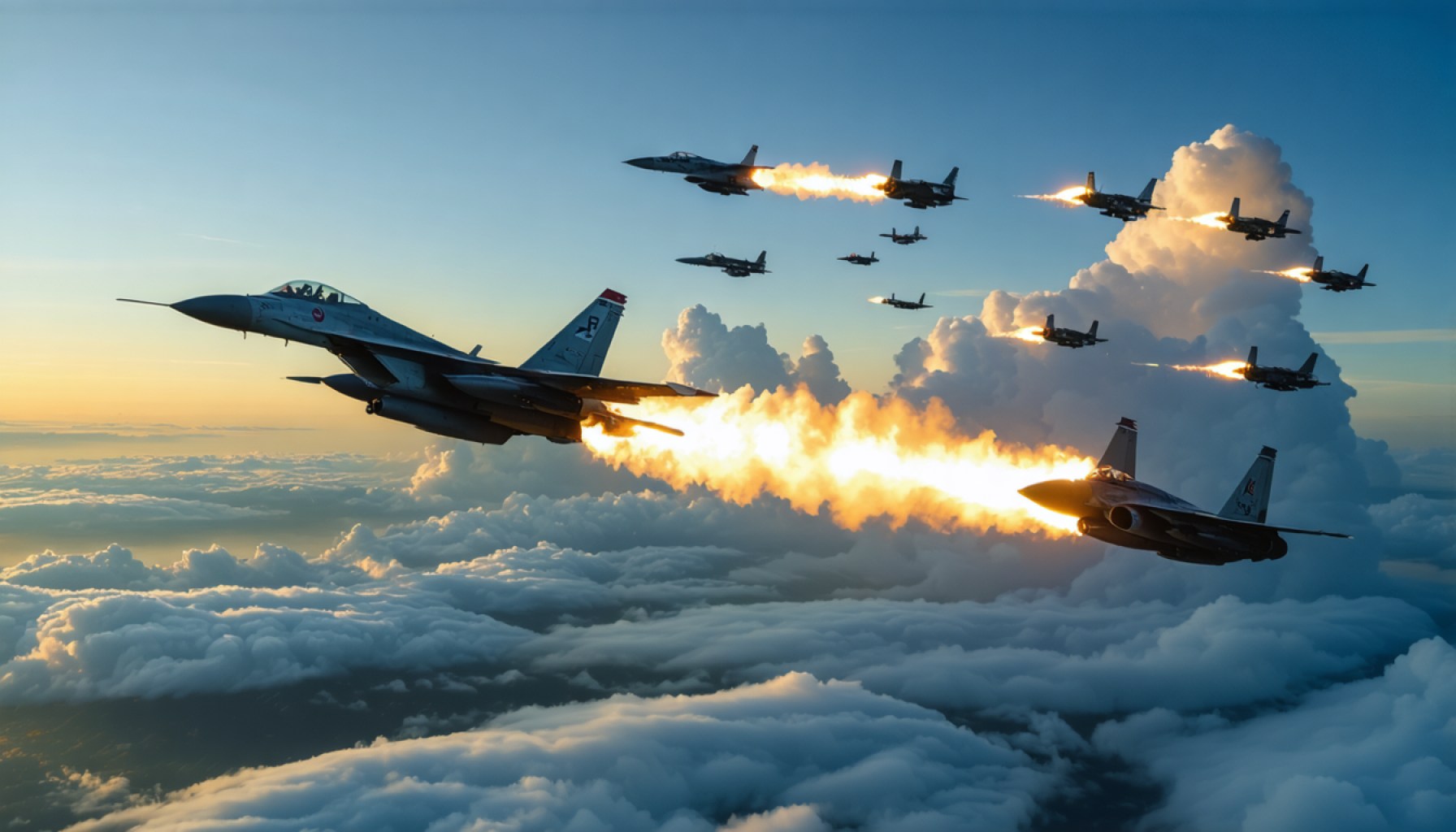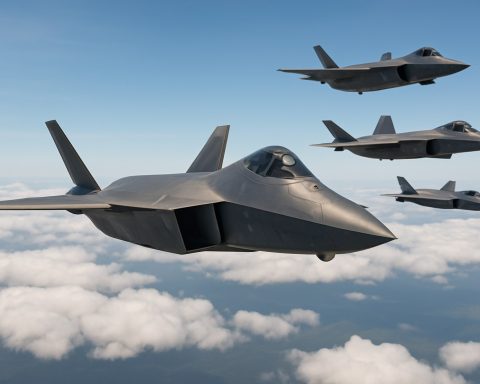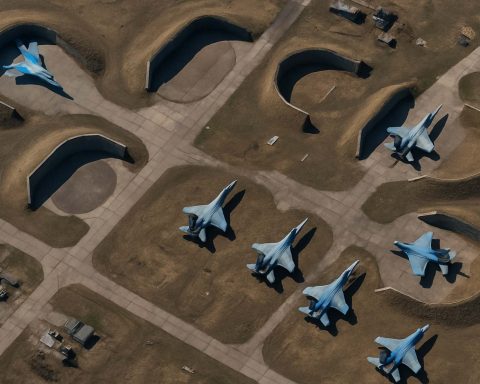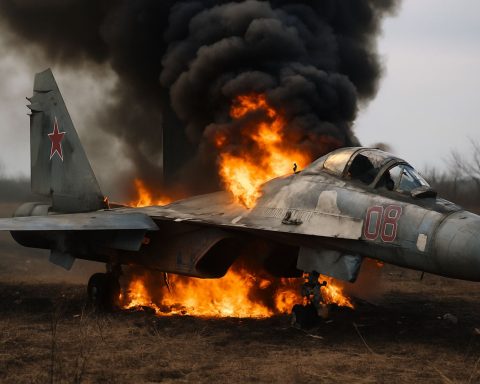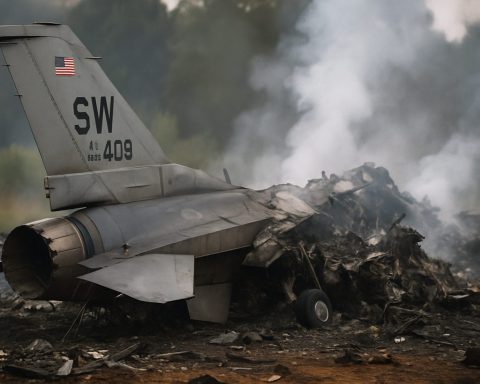- The pace of aerial confrontations in Japan’s airspace has intensified, with 704 scrambles in fiscal year 2024 by the Air Self-Defense Force.
- Chinese military aircraft remain a primary concern, accounting for nearly two-thirds of the incidents, including a significant breach of Japanese airspace near the Danjo Islands.
- Chinese drones are increasingly prevalent, indicating a shift towards systematic operations, with first-time appearances in regions like Amami-Oshima.
- Russian aircraft activities have increased, prompting 237 scrambles, with notable airspace violations near Rebun Island in Hokkaido.
- These events highlight the fragile balance of power in the region and underscore the need for vigilant defense and international diplomatic efforts.
- Japan’s airspace dynamics exemplify the complex interplay of technological ambitions and strategic maneuvers, raising awareness of global security implications.
Beneath the serene azure skies of Japan, an invisible chess game unfolds at hypersonic speeds. The fiscal year 2024 witnessed a dramatic escalation in these aerial confrontations, with Japan’s Air Self-Defense Force springing into action 704 times—each scramble a high-stakes ballet of precision and tension.
At the heart of this aerial drama are the roaring engines of Chinese and Russian military aircraft, perpetually testing the resolve of Japanese airspace guardians. Though slightly reduced, the Chinese sorties remain alarmingly prevalent, representing nearly two-thirds of all scrambles. One such encounter shatters the calm off the Danjo Islands in Nagasaki Prefecture, marking a historic first with Chinese aircraft breaching Japanese airspace—a stark reminder of the thin line separating routine patrols from international incidents.
In a chilling twist, the sky has new players. Chinese drones, once an irregularity, now dance more frequently across the screen of Japan’s radar. Their presence has more than tripled from previous records, suggesting a strategic shift as China moves beyond trial flights toward systematic drone operations. These unmanned sentinels extend China’s reach, appearing in places like Amami-Oshima for the first time, a stark symbol of technological evolution and tactical calculation.
Russia, not to be overshadowed, has ramped up its own activities, compelling 237 defensive sorties—an increase that paints a picture of growing assertiveness. September alone witnessed Russian aircraft breaching Japanese airspace three separate times near Rebun Island in Hokkaido. Each incursion was a test of mettle, prompting Japanese jets to deploy decoy flares for the first time, a fiery gesture of defiance and caution.
These aerial encounters are more than mere statistics; they are a testament to the delicate balance of power in the region and a clarion call for vigilance amidst shifting geopolitical sands. As these sky battles continue to evolve, their broader implications ripple far beyond the Pacific, stirring awareness in distant capitals and emphasizing the critical necessity for diplomatic engagement and collective security frameworks.
In this dance of jets, drones, and strategic maneuvers, Japan’s skies remind us that peace is both fragile and fiercely defended, etched daily in the contrails of its vigilant sentinels. The takeaway is clear: as technological prowess and strategic ambitions collide, the world must watch and act prudently, for in the skies above Japan lies a microcosm of our collective global future.
Inside Japan’s Sky Battles: What China’s and Russia’s Aerial Maneuvers Mean for Global Security
The rising tensions in Japan’s airspace conduct a silent symphony of power and strategy, demanding attention not only in Asia but across the globe. Japan’s Air Self-Defense Force (JASDF) has faced a substantial uptick in aerial challenges, particularly from Chinese and Russian military aircraft. Here are further insights into this geopolitical chess game and how it shapes international relations.
Expansion of Chinese Drone Activities
1. Tripling Drone Presence: The frequency of Chinese drones appearing in Japanese airspace has more than tripled, a testament to China’s expanding technological capabilities and operational strategy. This indicates a shift from mere reconnaissance to more aggressive and sustained aerial deployments.
2. Strategic Locations: Drones have been deployed to new strategic locations such as Amami-Oshima, underscoring China’s intention to increase its influence and surveillance reach, which could be a preparatory step for further military or strategic initiatives in the area.
Russian Incursions and Tactical Shifts
1. Increased Sorties: Russia’s increased activity with 237 sorties highlights a more aggressive posture, reflecting perhaps a strategic pivot in the wake of global sanctions and international pressures in other areas.
2. Deployment of Decoy Flares: The use of decoy flares by Japan marks a tactical evolution in aerial defense, stepping up from passive deterrence to active defense mechanisms in response to perceived threats.
Real-World Implications
– Global Security Concerns: Escalations in Japan’s airspace reflect broader security issues that could lead to heightened international scrutiny and potentially new defense policies in the Pacific and beyond.
– Diplomatic Channels: These incidents underscore the need for robust diplomatic engagement and clearer communication channels to mitigate risks of miscalculation and ensure peace is maintained.
Market Forecasts & Industry Trends
– Defense Spending: Expect a rise in defense budgets not only from Japan but also other nations invested in the region, potentially leading to increased procurement of advanced defense systems such as anti-drone technology and enhanced radar systems.
– Technological Innovations: The need to counter hypersonic and drone threats will spur innovation in aerospace technologies, focusing on detection, tracking, and neutralization.
Controversies & Limitations
– Peace vs. Militarization: Balancing between showing military prowess and maintaining peace is a significant challenge for Japan, with internal debates and international pressure potentially leading to an overhaul in its peaceful defense posture.
– Technological Escalation Risks: As nations invest in high-tech arms, the risk of an arms race looms, raising the potential for advanced arsenals to lead to disproportionate responses.
Actionable Recommendations
– Strengthen Alliances: Japan and its allies should forge stronger defense pacts and enhance joint military exercises to prepare for scenarios involving aerial confrontations.
– Invest in Cybersecurity: As drone warfare grows, so does the need for robust cybersecurity measures to protect sensitive defense technologies and infrastructures.
– Public Awareness: Increased public awareness and education regarding airspace security can help foster a supportive environment for necessary military expenditures.
For more insights into defense technologies and global security challenges, visit [The Japan Times](https://www.japantimes.co.jp) or [Nikkei Asia](https://asia.nikkei.com).
